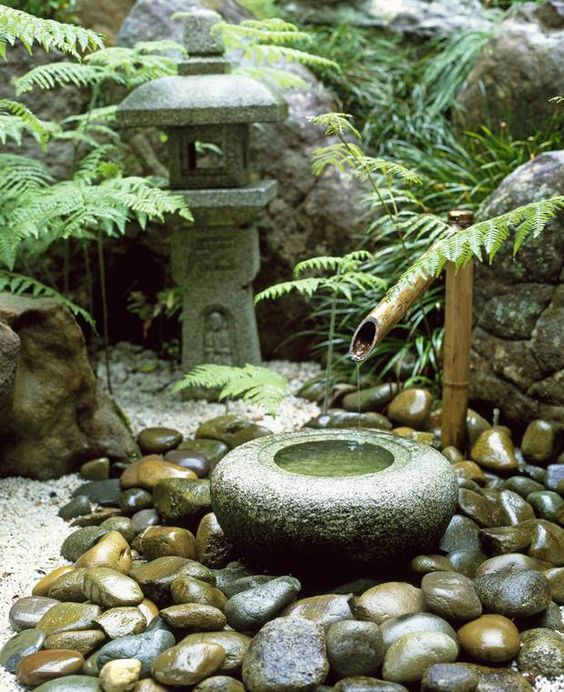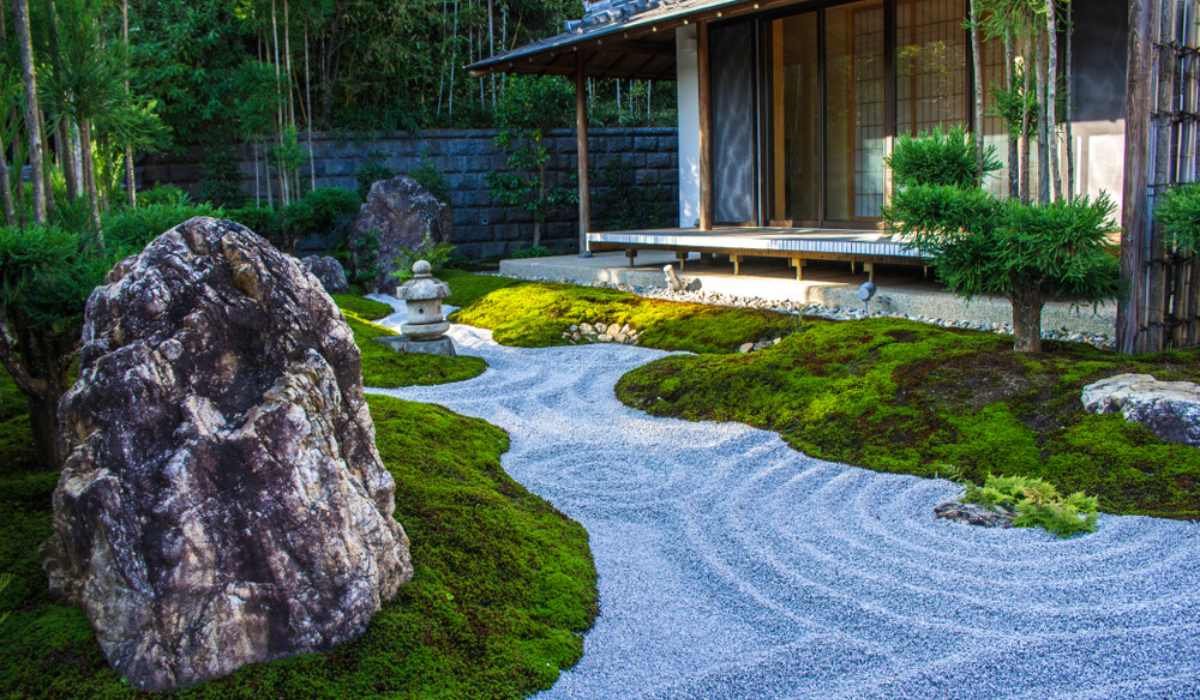In this fast-paced world, finding peace and relaxation has become a challenge. Zen gardens offer a retreat from the hustle and bustle of everyday life, allowing you to connect with nature and find inner peace. So, let’s explore the art of creating a Zen garden step by step, offering insights and tips to craft a serene outdoor space that promotes relaxation and mindfulness.
See also: How to design a beautiful Japanese garden?
Steps to make a zen garden at home
A zen garden is a traditional Japanese garden known for its simplicity and minimalist design. It aims to create a space for meditation and contemplation. Follow these steps to design your own zen garden:
Step 1: Choose the right location
Select a quiet and peaceful spot in your garden or yard for your zen garden. Ideally, it should be away from distractions and noise, allowing you to immerse yourself fully in the serene atmosphere.
Step 2: Define the space
Use rocks, pebbles or wooden borders to define the boundaries of your zen garden. This creates a sense of enclosure and focuses attention on the designated area.
Step 3: Select the elements
Traditional Zen gardens consist of specific elements like rocks, sand, gravel and plants. Choose these elements mindfully, keeping in mind their symbolic significance.

Source: ArchitectureArtDesign (Pinterest)
Step 4: Rake the gravel
Raking the gravel or sand in your Zen garden is a meditative practice. Create patterns that resemble ripples or flowing water to bring a sense of movement and tranquility.
Step 5: Place the rocks
Position the rocks in your Zen garden thoughtfully. Larger rocks represent islands, while smaller rocks symbolize mountains or natural landscapes.
Step 6: Plant minimalist greenery
Keep the plantings simple and minimal. Japanese maples, bamboo and evergreens are excellent choices for a Zen garden, adding natural beauty without overwhelming the space.
Step 7: Add water elements
If possible, include a water feature in your Zen garden, such as a small pond or a trickling fountain. The sound of flowing water enhances the sense of calmness and relaxation.

Source: The Mirror (Pinterest)
Step 8: Incorporate seating
Include a seating area where you can sit and meditate, contemplate or simply enjoy the peaceful ambiance of your Zen garden.
Step 9: Cultivate mindfulness
Regularly tend to your Zen garden with mindful attention. Rake the gravel, trim the plants and maintain the space with care to foster a sense of mindfulness in your everyday life.
Step 10: Embrace simplicity and balance
Remember that simplicity and balance are at the heart of zen gardening. Avoid clutter and excessive decoration, allowing the natural elements to speak for themselves.
FAQs
What is the main purpose of a zen garden?
The main purpose of a zen garden is to provide a space for meditation, contemplation and inner peace. It offers a place to connect with nature and find peace.
Can I create a zen garden in a small space?
Yes, zen gardens can be adapted to fit any size of space. Even a small corner of your backyard or a balcony can be transformed into a serene zen garden with the right elements.
Do I need professional help to create a Zen garden?
While professional landscapers can help you design a zen garden, it is not necessary. With some research and creativity, you can create a beautiful zen garden on your own.
Are there specific plants that I must use in my Zen garden?
There are no strict rules about the plants you must use. However, choosing minimalist and evergreen plants that require low maintenance is advisable to maintain the zen garden's tranquil ambiance.
Can I add decorative elements like statues or lanterns to my zen garden?
While traditional zen gardens focus on natural elements, you can add subtle decorative elements like lanterns or small sculptures, as long as they complement the overall simplicity and balance.
| Got any questions or point of view on our article? We would love to hear from you. Write to our Editor-in-Chief Jhumur Ghosh at [email protected] |

Dhwani is a content management expert with over five years of professional experience. She has authored articles spanning diverse domains, including real estate, finance, business, health, taxation, education and more. Holding a Bachelor’s degree in Journalism and Mass Communication, Dhwani’s interests encompass reading and travelling. She is dedicated to staying updated on the latest real estate advancements in India.
Email: [email protected]











